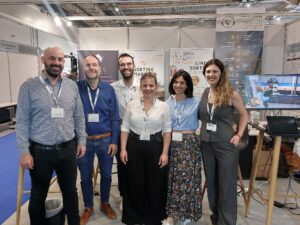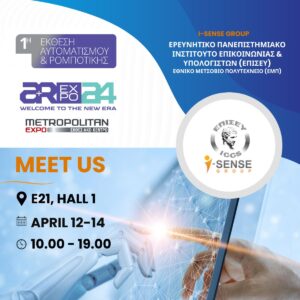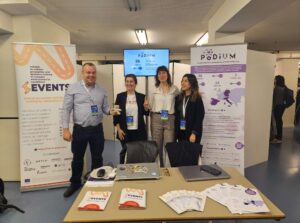ICCS is leading the work package that designs the architecture of the ITS Observatory and transforms it in a functional prototype. The specifications for the platform are based on the user requirements extracted from two main sources: state of the art study of existing and previous activities (cooperation platforms & monitoring tools) and stakeholder workshop organised on 17th June in Brussels.
Concretely, the specifications are extracted from data sets, hence for each type of data set applies different type of Meta template. These Meta template types are the foundation for the set of key values. In addition, the key performance indicators (KPIs) to be supported by the Platform are specified according to the input and their correlation to the key values as defined for each Meta template. Then, the Platform architecture is defined in accordance to guidelines and recommendations by relevant standardisation bodies. Finally, a functional prototype, as well as a design mock-up, is prepared to be validated by users, before its actual implementation and the public release of the Observatory.
KPIs are defined as a set of quantifiable and measurable values that a company or industry uses to gauge or compare performance in terms of meeting their strategic and operational objectives. KPIs vary between industries, depending on their priorities or performance criteria. Several KPI’s are included in the ITS Observatory for the data classification and structuring.
Currently, a first version of a wire frame model of the platform was prototyped to test the concept and flow and ensure that they are optimal for the users.
The wire frame is based on the specifications of the ITS Observatory platform distinguished in data, algorithms, interface and software platform. The data specifications tackle structure, format and quality but also specifications how to acquire, how to aggregate and how to present data to the users. Meta templates are created based on each type of data set and key values will be defined per type of data set (Meta template). Algorithms include all data processing tools based on key values per Meta template, for example, to combine data from multiple sources, and cover all processes needed to meet the requirements by the users and background processes needed for the ITS Observatory operation. Interface specifications focus on user’s interfacing with the software platform, methods to input and query data, as well as any communication and messages between software modules. Software platform specifications handle general issues like users’ authentication, graphical environment, menu items, but also its main elements and their interactions and interfaces.
The next steps include the design of the software platform and the graphical design of its user interface, which will use the visual identity of the ITS Observatory. This will include the design of the user experience elements, including data entry elements and onscreen guides. Emphasis will be given to the ergonomic design of the graphical environment and elements of the platform. The first draft of the Platform with a minimum of content will be available in January 2016 and will be validated with users during a stakeholder workshop in February. The draft release of the platform with a limited distribution is planned for April 2016.
The ITS Observatory will become public in October 2016.





